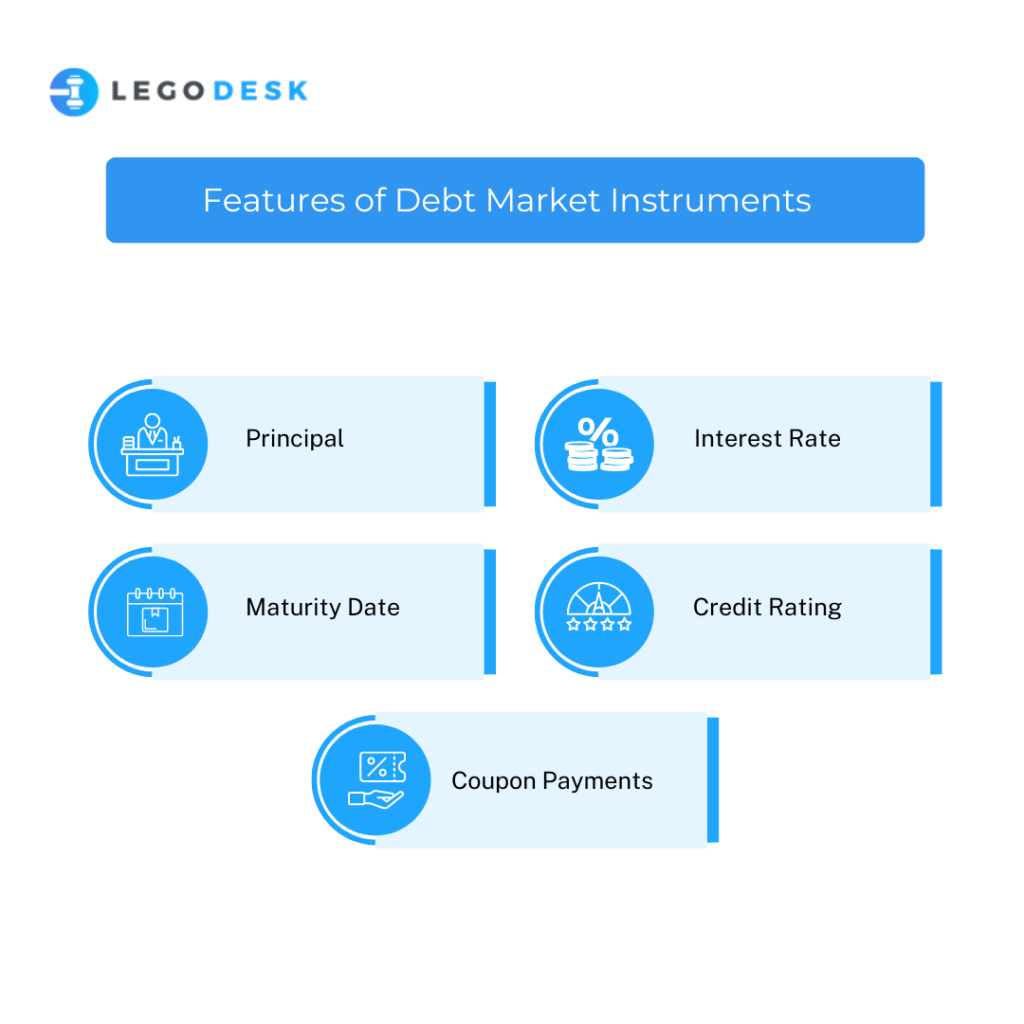Understanding Debt Market Instruments: A Comprehensive Guide
Investing in debt instruments is a popular option for investors in India and around the world. Debt instruments can be a great option for investors who are looking for relatively stable returns while also being associated with lower risk. In fact, debt instruments are highly popular with institutional investors such as corporations and governments due to its many advantages and unique features.
However, understanding the landscape of debt instruments can be a complicated endeavor. There are many different types of instruments and they each have their unique behaviour. It can take some time for an investor to understand the nuances of investing in debt instruments in a way that works best for the investor.
Here is a snapshot look at debt market instruments and their advantages.
What are Debt Instruments?
Debt instruments are quite different from equity. While the returns from equity investments depend on the market performance of the company and the wider market, the returns from debt instruments are fixed.
A debt instrument is essentially like a loan. It is a promise by the issuer that they will repay the principal amount of the investment along with the requisite interest to the holder of the instrument within the stipulated time period.
Debt instruments act like a way for retail investors to provide loans to governments and corporations. Institutional investors can also invest in debt instruments in the open market and often do.
Features of Debt Market Instruments

Debt instruments come with a few unique features. Understanding how these features work is key to debt investing.
Principal
The principal is the amount which the issuer of the debt instrument borrows from the investor. It can also be called the face value of the instrument. If an investor invests Rs. 100 in a single unit of a debt instrument, then that is the principal amount or the face value of the instrument.
Interest Rate
The interest rate is the rate at which the issuer will be repaying the debt. This rate is essentially the returns that the investor can expect from their investment. A debt market example can be if the interest rate or the coupon rate is 7% per annum, then the returns that an investor can expect is 7% as long as everything goes well and the issuer is able to repay their obligations.
Maturity Date
The maturity date is the date by which the debt instrument expires. For example, if the issuer borrows money for a period of 3 years, then the maturity date of the instrument will be set at 3 years. The entire principal and interest may be repayable to the investor at the maturity date or on a periodic basis leading up to the maturity date.
Credit Rating
Every debt instrument comes with a credit rating. The credit rating indicates to the investor the likelihood that the debt will be repaid in full. The better the credit rating, the safer the investment is considered to be. However, the credit rating is not a guarantee. A high credit rating does not mean that the debt will definitely be paid. Similarly, a low credit rating does not mean that a debt will go unserviced.
Coupon Payments
The coupon payments are the payments that the debt issuer will be making before the expiry of the instrument. For example, many debt instruments come with monthly coupon payments. Hence, the holder will receive a monthly payment from the issuer. Different types of debt instruments have different periods of coupon payments.
Types of Debt Market Instruments
There are several types of debt instruments in India. Let’s take a look at some of the most popular debt instrument examples.

Bonds
Bonds are long-term debt securities issued by corporations, municipalities, or governments. They typically have a fixed interest rate and a maturity date.
- Government Bonds: Issued by national governments; considered low-risk.
- Municipal Bonds: Issued by states or local governments; often tax-exempt.
- Corporate Bonds: Issued by companies; higher risk and return potential.
Notes
Notes are similar to bonds but generally have shorter maturities, typically ranging from one to ten years. They offer periodic interest payments and return the principal at maturity.
Commercial Paper
CDs are time deposits offered by banks with fixed terms and interest rates. They are considered low-risk, as they are often insured by governments.
Certificates of Deposit (CDs)
This is a short-term, unsecured promissory note issued by corporations to finance short-term liabilities. It usually matures within 270 days.
Treasury Bills (T-Bills)
Short-term government securities with maturities ranging from a few days to one year. They are sold at a discount and redeemed at face value.
Debentures
Unsecured long-term debt instruments backed only by the creditworthiness of the issuer, not by physical assets or collateral.
Convertible Securities
These are hybrid instruments that can be converted into equity shares of the issuing company at a predetermined rate and time.
Risk Factors of Debt Instruments
- Interest Rate Risk: Prices of debt instruments can fall if interest rates rise. The price of a debt instrument is determined by the debt market. When the interest rate rises, it can put a downward pressure on the price of the instrument.
- Credit Risk: The risk of default by the issuer. There is no guarantee that the issuer will be able to repay the debt.
- Inflation Risk: The potential for inflation to erode purchasing power.
- Liquidity Risk: Some debt instruments may not be easily sellable in secondary markets.
Wrapping Up
Overall, the debt market can be a great way for investors to gain fixed income. There are many types of debt instruments available in the market which means that finding a suitable market instrument should not be too difficult. Retail investors who are just starting their debt investing journey can consider simpler instruments like CDs and bonds before venturing into more complicated products like debentures and convertible securities.
Try our Debt Resolution solutions today Request a Demo
